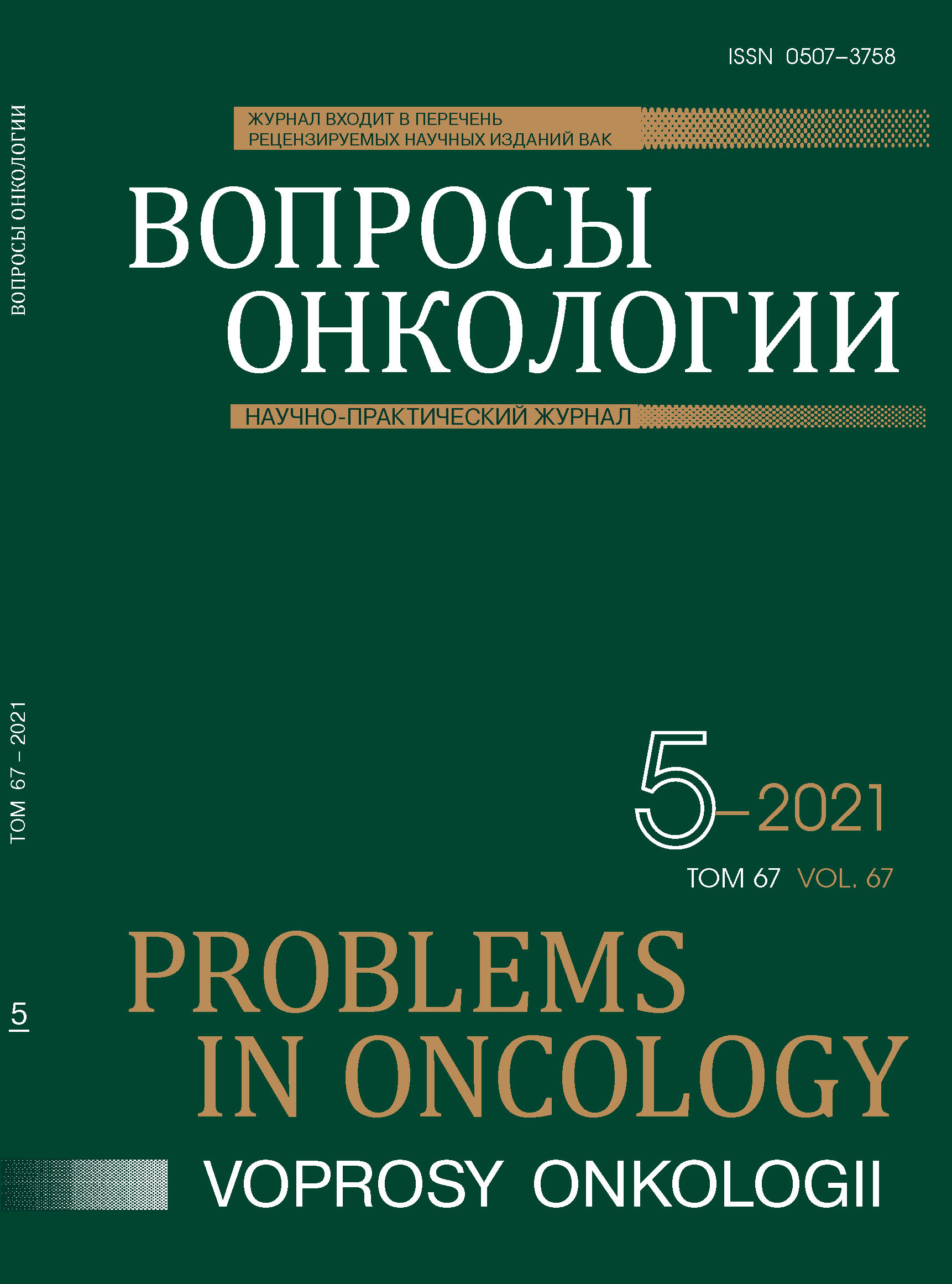Abstract
Introduction. Silver nanoparticles due to its pronounced cytotoxicity are regarded as promising agent for anticancer therapy. Determination of normal and transformed cells sensitivity to silver nanoparticles can be the basis for the application as an adjuvant cancer treatment.
The objective of the study was to investigate influence of atomic clusters of Argentum (ACA) in the form of silver bisilicate nanoparticles colloid solution on viability and proliferation of human myeloma cell line, mesenchymal stromal cells and blood lymphocytes.
Material and methods. Cell viability was evaluated by MTT and LDH assay. Cell proliferation was evaluated by flow cytometry.
Results. It was found that ACA had dose-depending cytotoxicity toward all investigated cell types, but normal and transformed cells varied significantly in the sensitivity to nanoparticles. IC50 for myeloma cell line RPMI8226 was 1,75 µg/ml. For MSCs of different origin IC50 was in the range of 12 to 16 µg/ml. ACA in concentration from 2 to 3 µg/ml induced RPMI8226 cells metabolic disruption and death without influence on viability and cell cycle of mesenchymal stromal cells and blood lymphocytes.
Conclusion. Results of work has shown distinct differences in sensitivity to ACA between myeloma cells, mesenchymal stromal cells and blood lymphocytes. The optimal range of ACA concentration with anticancer effect without cytotoxic influence on normal cells has been determined in vitro.
References
Станишевская И.Е., Стойнова А.М., Марахова А.И. и др. Наночастицы серебра: получение и применение в медицинских целях // Разработка и регистрация лекарственных средств. 2016;1(14):66–69 [Stanishevskaya I.E., Stoinova A.M., Marakhova A.I. Silver nanoparticles: preparation and use for medical purposes // Razrzbotka i registratsiya ltkarstvennykh sredstv. 2016;1(14):66–69. (In Russ.)].
Zhang XF, Liu ZG, Shen W et al. Silver Nanoparticles: Synthesis, Characterization, Properties, Applications, and Therapeutic Approaches // Int J Mol Sci. 2016;17(9):1534. https://doi:10.3390/ijms17091534
Carlson C, Hussain SM, Schrand AM et al. Unique cellular interaction of silver nanoparticles: size-dependent generation of reactive oxygen species // J Phys Chem B 2008;112(43):13608–13619. https://doi:10.1021/jp712087m
Butler KS, Peeler DJ, Casey BJ et al. Silver nanoparticles: correlating nanoparticle size and cellular uptake with genotoxicity // Mutagenesis. 2015;30(4):577–591. https://doi:10.1093/mutage/gev020
Gurunathan S, Qasim M, Park C. Cytotoxic potential and Molecular Pathway Analysis of Silver Nanoparticles in Human Colon Cancer Cells HCT116 // Int J Mol Sci. 2018;19(8):2269. https://doi:10.3390/ijms19082269
Gurunathan S, Jeong JK, Han JW et al. Multidimensional effects of biologically synthesized silver nanoparticles in Helicobacter pylori, Helicobacter felis, and human lung (L132) and lung carcinoma A549 cells // Nanoscale Res Lett. 2015;10:35. https://doi:10.1186/s11671-015-0747-0
Majeed S, Aripin FHB, Shoeb NSB et al. Bioengineered silver nanoparticles capped with bovine serum albumin and its anticancer and apoptotic activity against breast, bone and intestinal colon cancer cell lines // Mater Sci Eng C Mater Biol Appl. 2019;102:254–263. https://doi:10.1016/j.msec.2019.04.041
Xiao H, Chen Y, Alnaggar M. Silver nanoparticles induce cell death of colon cancer cells through impairing cytoskeleton and membrane nanostructure // Micron. 2019;126:102750. https://doi:10.1016/j.micron.2019.102750
Graf C, Nordmeyer D, Sengstock C et al. Shape-Dependent Dissolution and Cellular Uptake of Silver Nanoparticles // Langmuir. 2018;34(4):1506–1519. https://doi:10.1021/acs.langmuir.7b03126
Тындык М.Л., Попович И.Г., Малек А.В. и др. Изучение противоопухолевого эффекта коллоидного бисиликата серебра в экспериментах in vitro и in vivo // Вопросы онкологии. 2019;65(5):760–765 [Tyndyk M.L., Popovich I.G, Мalek А.В. et al. Antitumor effect of colloidal silver bisilicate in experimental in vitro and in vivo studies // Voprosy onkologii. 2019;65(5):760–765 (In Russ.)].
Swanner J, Fahrenholtz CD, Tenvooren I et al. Silver nanoparticles selectively treat triple-negative breast cancer cells without affecting non-malignant breast epithelial cells in vitro and in vivo // FASEB Bioadv. 2019;1(10):639–660. https://doi:10.1096/fba.2019-00021
Arora S, Jain J, Rajwade JM et al. Interactions of silver nanoparticles with primary mous fibroblasts and liver cells // Toxicol Appl Pharmacol. 2009;236(3):310–318. https://doi:10.1016/j.taap.2009.02.020
Байдакова М.В., Германов Н.А., Голяндин С.Н. и др. Слабоупорядоченный наноструктурированный бисиликат серебра и его коллоидные растворы: получение и свойства // Журнал технической физики. 2019;89(6):944–53. https://doi:10.21883/0000000000 [Baidakova MV, Germanov NA, Goliandin SN et al. Weakly ordered nanostructured silver bisilicate and its colloidal solutions: preparation and properties // Journal tekhnicheskoi fiziki. 2019;89(6):944–953 (In Russ.). https://doi:10.21883/0000000000].
Бычкова Н.В. Анализ содержания ДНК методом проточной цитометрии. Возможности применения в клинической практике. Тверь: ООО «Издательство «Триада», 2015.
Valle-Prieto A, Conget PA. Human mesenchymal stem cells efficiently manage oxidative stress // Stem Cells Dev. 2010;19(12):1885–1893. https://doi:10.1089/scd.2010.0093
Greulich C, Kittler S, Epple M et al. Studies on the biocompatibility and the interaction of silver nanoparticles with human mesenchymal stem cells (hMSCs) // Langenbecks Arch Surg. 2009;394(3):495–502. https://doi:10.1007/s00423-009-0472-1
Hackenberg S, Scherzed A, Kessler M et al. Silver nanoparticles: evaluation of DNA damage, toxicity and functional impairment in human mesenchymal stem cells // Toxicol Lett. 2011;201(1):27–33. https://doi:10.1016/j.toxlet.2010.12.001
He W, Kienzle A, Liu X et al. In Vitro Effect of 30 nm Silver Nanoparticles on Adipogenic Differentiation of Human Mesenchymal Stem Cells // J Biomed Nanotechnol. 2016;12(3):525–35. https://doi:10.1166/jbn.2016.2182
Greulich C, Diendorf J, Gessmann J et al. Cell type-specific responses of peripheral blood mononuclear cells to silver nanoparticles // Acta Biomater. 2011;7(9):3505–3514. https://doi:10.1016/j.actbio.2011.05.030
Yakop F, Abd Ghafar SA, Yong YK et al. Silver nanoparticles Clinacanthus Nutans leaves extract induced apoptosis towards oral squamous cell carcinoma cell lines // Artif Cells Nanomed Biotechnol. 2018;46(supl. 2):131–139. https://doi:10.1080/21691401.2018.1452750
Arora S, Jain J, Rajwade JM et al. Cellular responses induced by silver nanoparticles: In vitro studies // Toxicol Lett. 2008;179(2):93–100. https://doi:10.1016/j.toxlet.2008.04.009
Azizi M, Ghourchian H, Yazdian F et al. Anti-cancerous effect of albumin coated silver nanoparticles on MDA-MB 231 human breast cancer cell line // Sci Rep. 2017;7(1):5178. Published 2017 Jul 12. https://doi:10.1038/s41598-017-05461-3

This work is licensed under a Creative Commons Attribution-NonCommercial-NoDerivatives 4.0 International License.
© АННМО «Вопросы онкологии», Copyright (c) 2021
